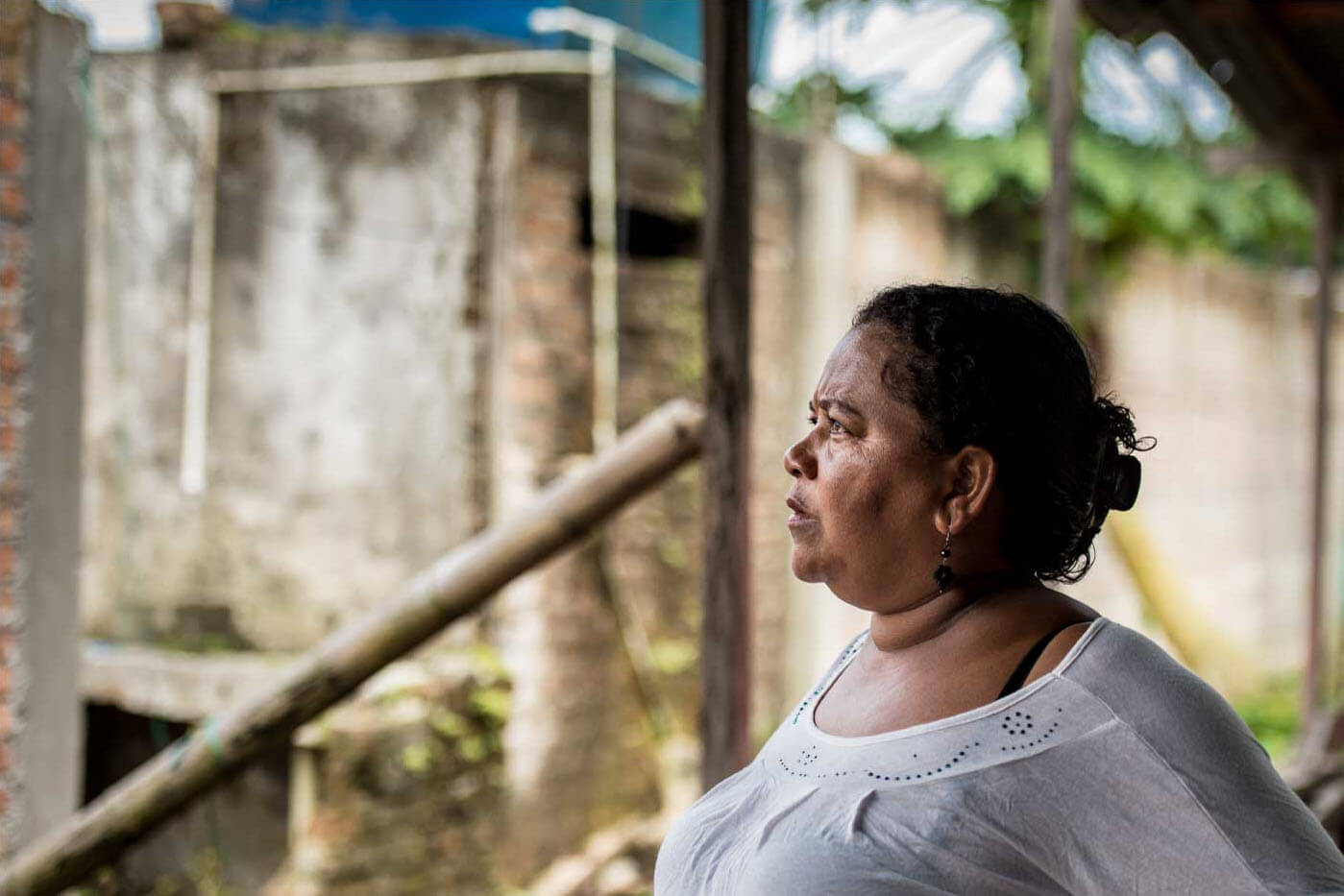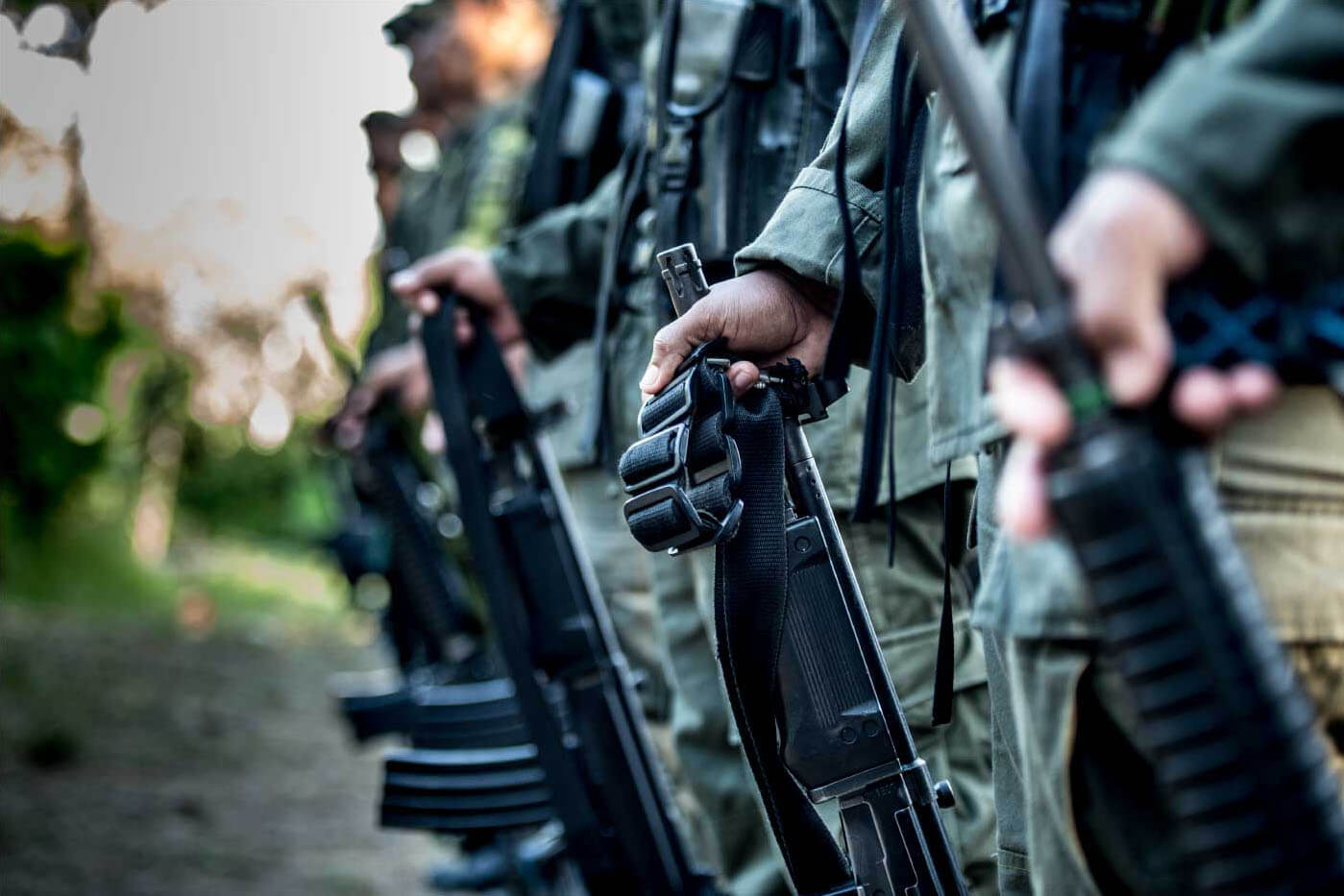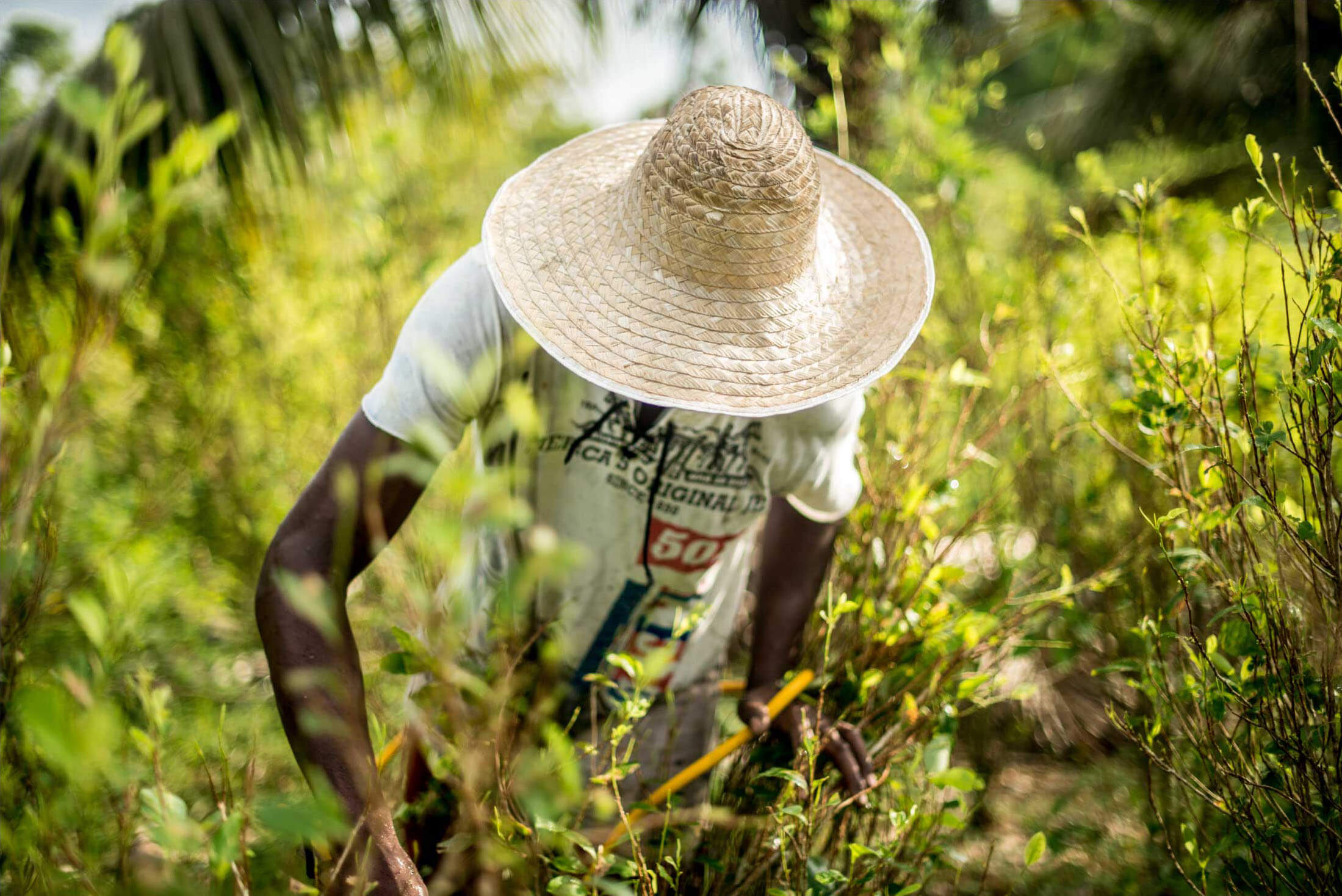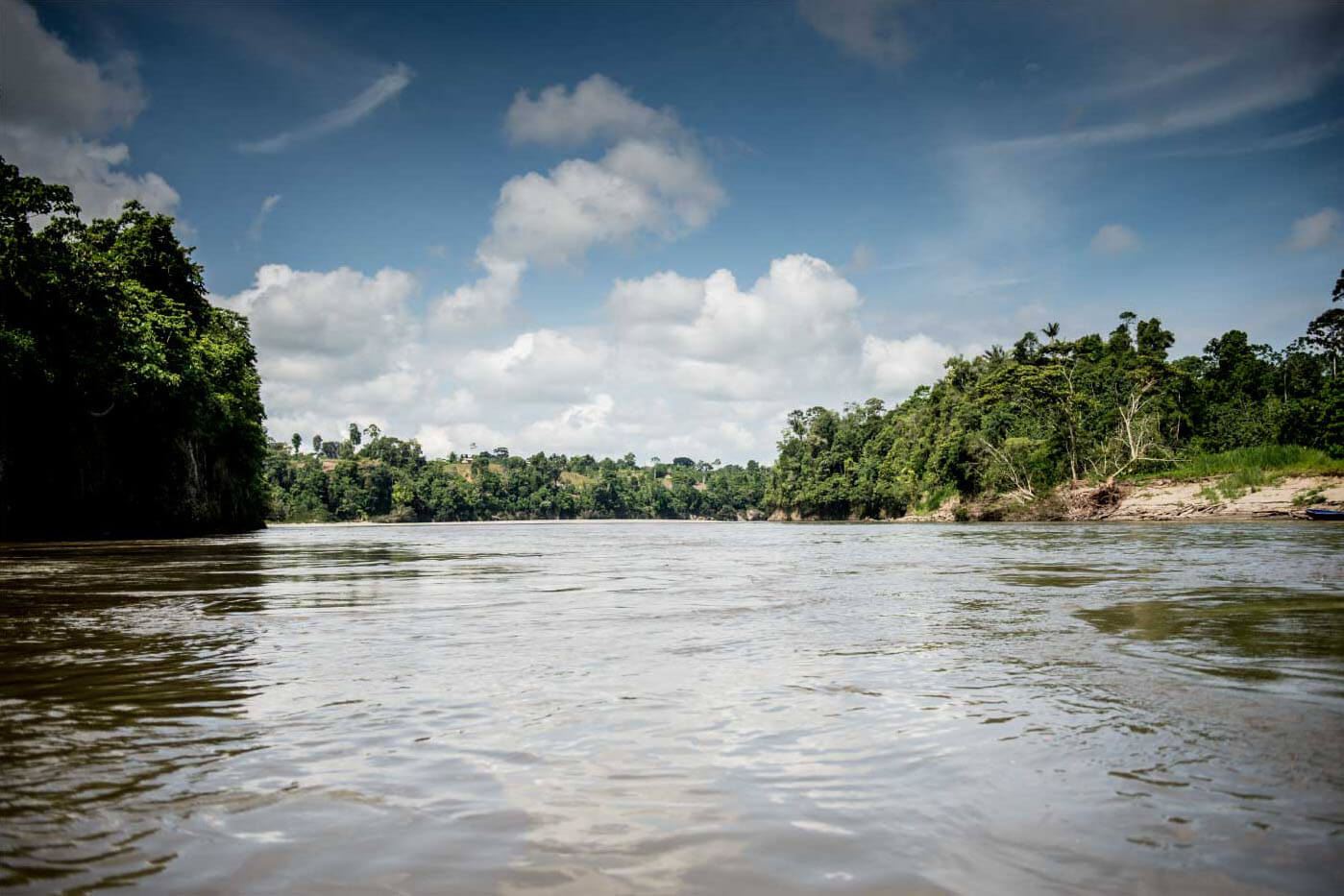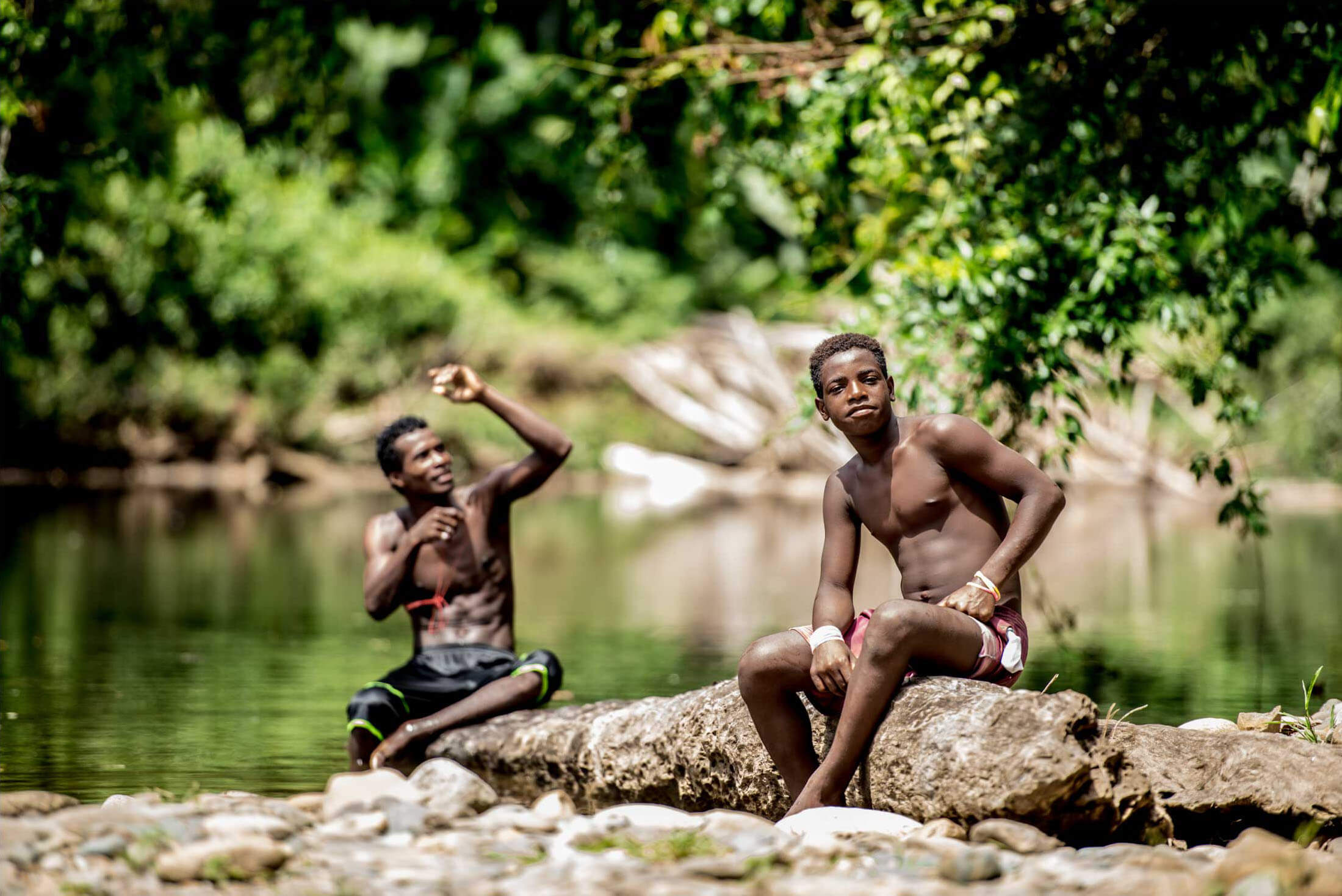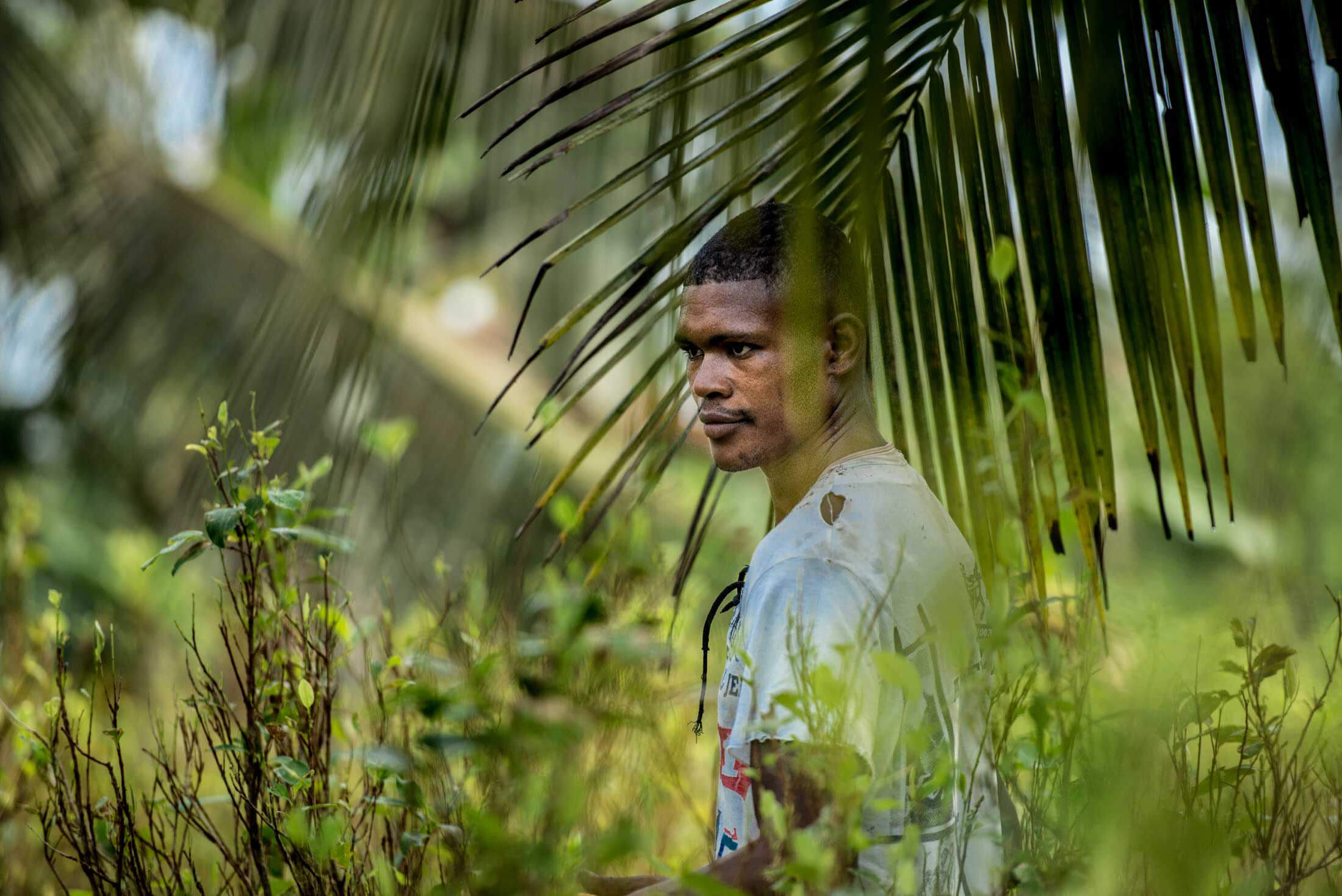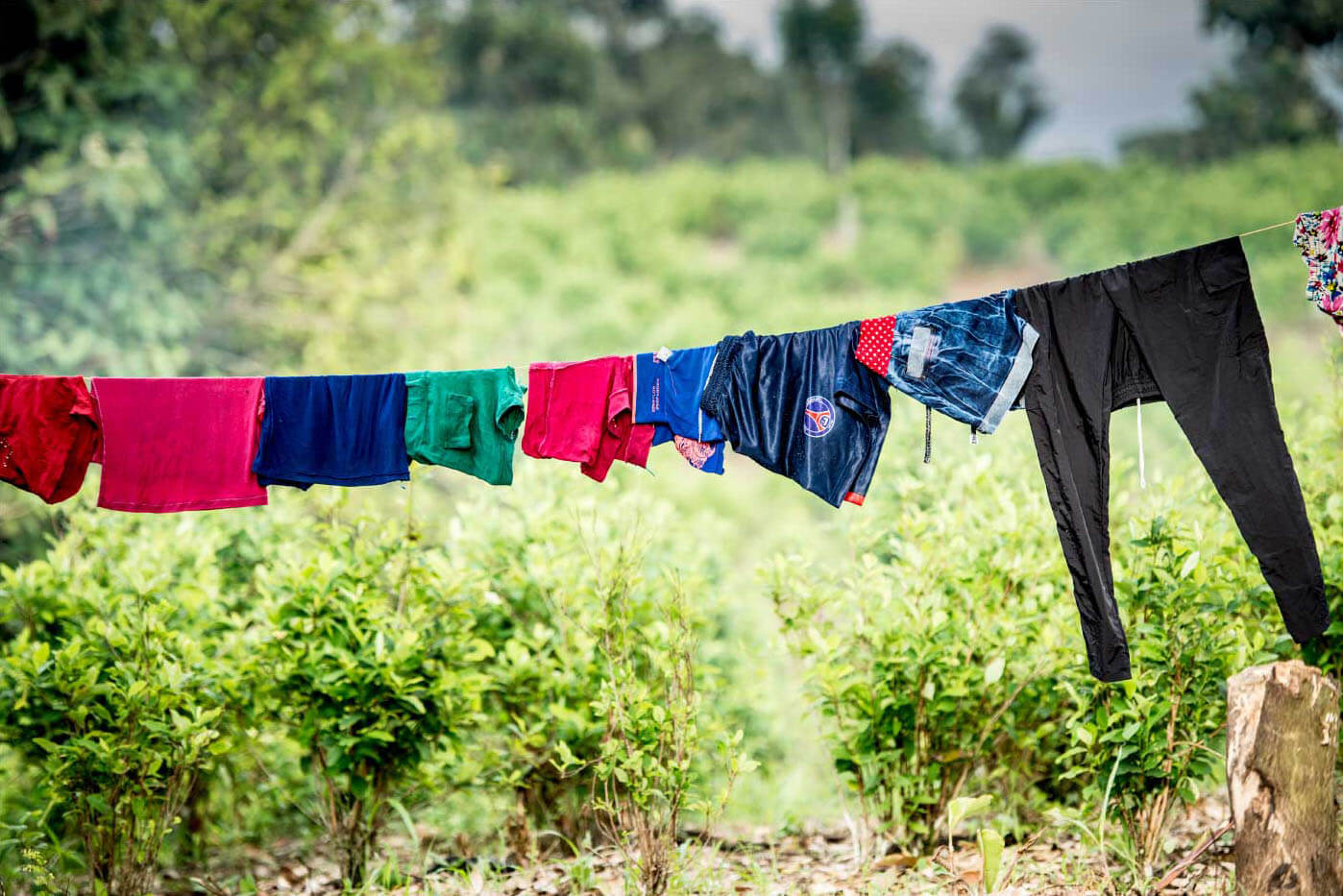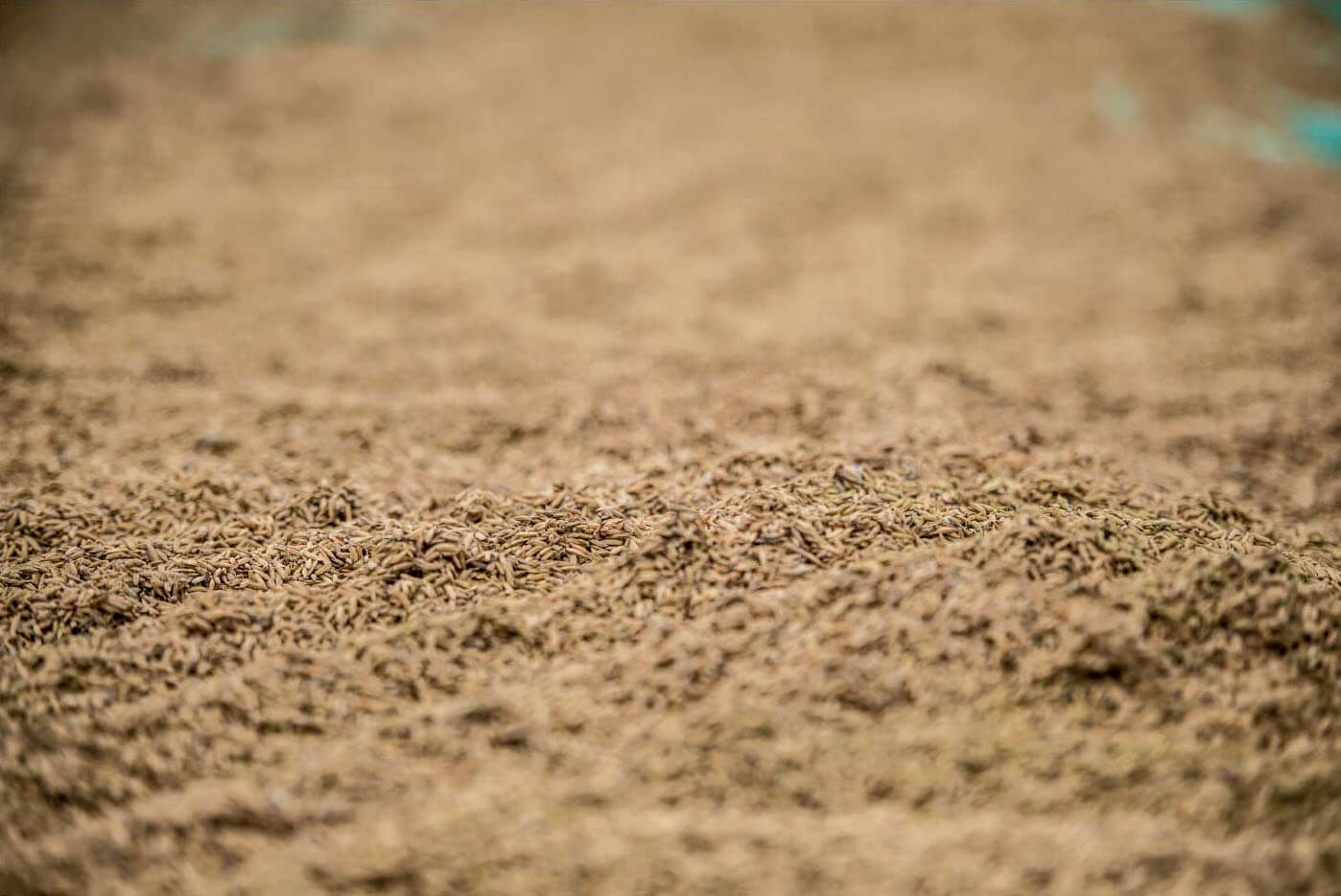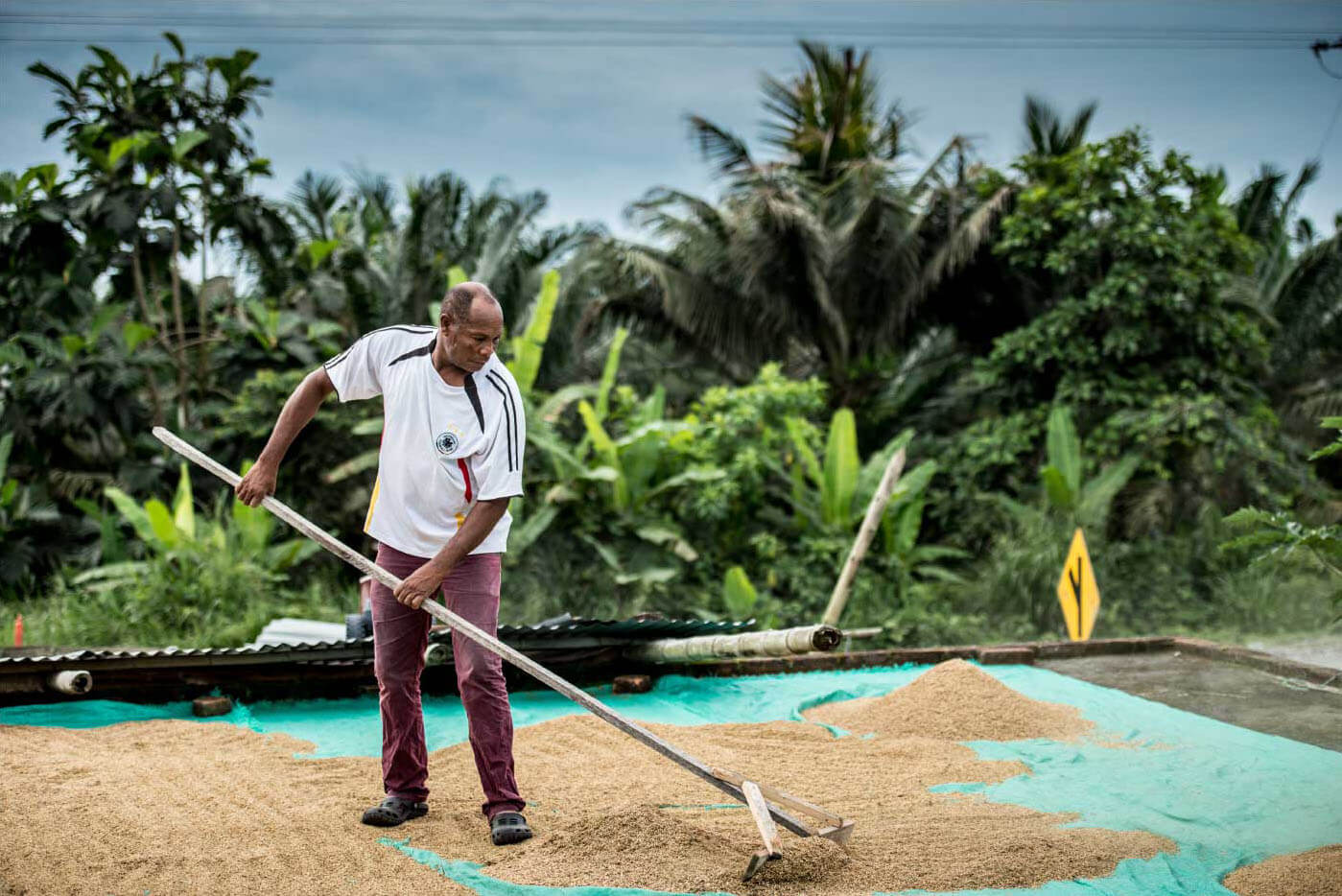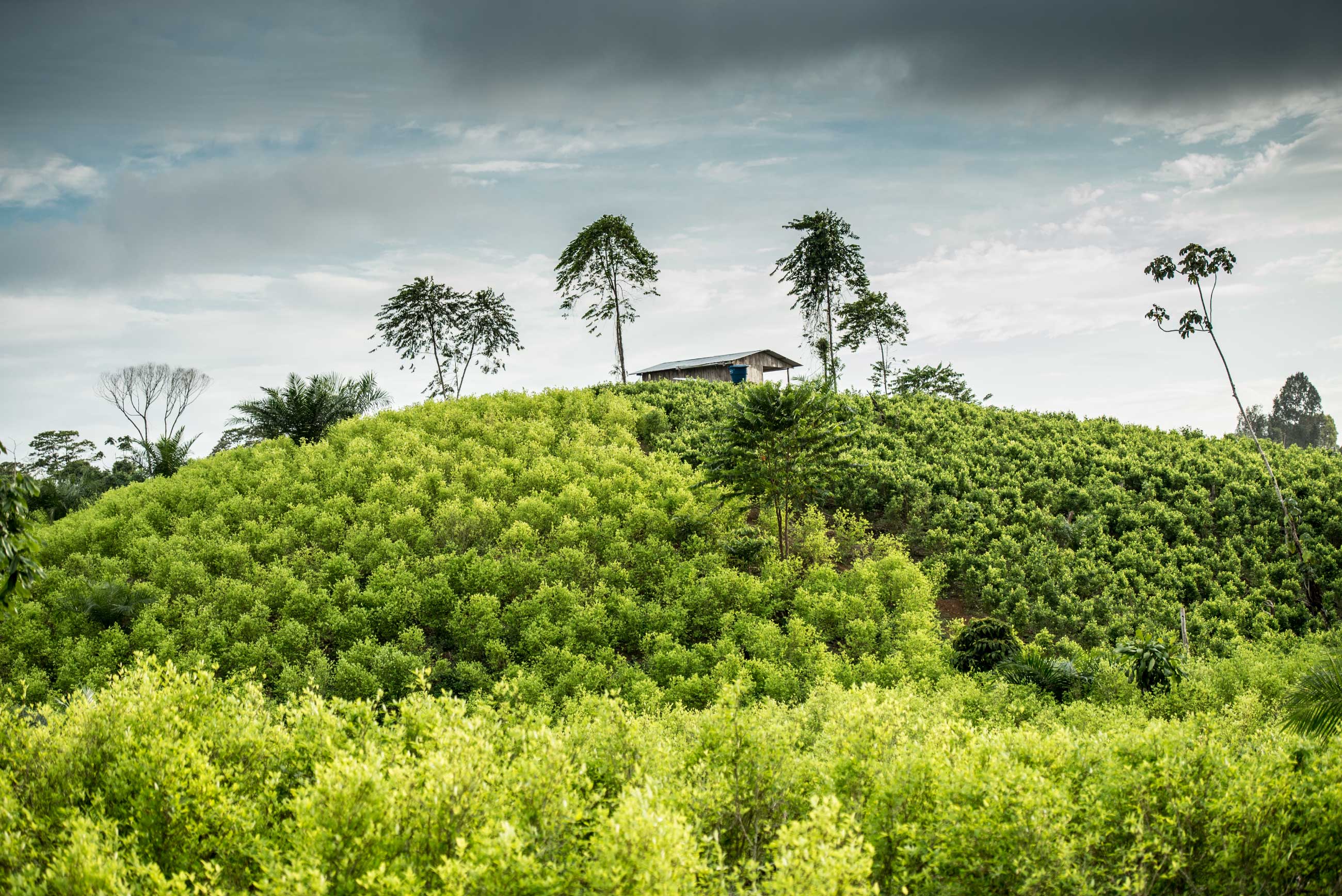Tumaco, 2003.
The men arrived the way bandits arrive in the movies: in the middle of the night, in rural scenery, just when the power has crashed and the family, unaware, talks in the darkness or by candlelight. Pistols in hand, they came in. They were searching for Don Da –Conchita’s nickname for her husband Daniel. He was sleeping in the second floor. Downstairs, the kids talked and Conchita shuffled papers in the dining room.
–Don Daleft for a meeting, down there, at the house of a Mr. Videncio –Conchita lied.
As they went out spurring one of the daughters towards the address of the supposed Mr. Videncio, Conchita ran upstairs. She covered his mouth and whispered.
–Get up right now. They are coming to kill you.
Don Da, still dubious, stood up and sneaked a peek through the edge of the window. He saw a man down there. Tratra, he then heard as the gun was loaded.
Don Da was still sitting in the bed when Conchita came up again. It was just like the last time, except that now a gun man followed her, shining a flashlight over every corner of the room. Don Da drew a cross over his head, chest and shoulders. In the name of the Father, of the Son, and the Holy Spirit. Dear God, dear God, may it be whatever you will.
Someone must have paid attention to his inward prayer as the ta tataof the approaching boots resonated on the stairs. Someone, somewhere, must have heard his thoughts, for suddenly a huge shadow pointed a darkened finger at him, and he, following an order he didn’t understand, stood up and placed himself a few centimeters behind the door. The man with the gun and the flashlight climbed the last set of stairs and also stopped by the door. Don Da’s nose was almost touching the man’s back, but the man didn’t notice the breathing. It was as if Don Da wasn’t exhaling the hot air that he could see coming out of his mouth. The flash of light shone on the bed, the wall in front, the night stand, the wall behind the man, the floor, the space under the bed, and there was nothing, no one. Don Da had become invisible for a few minutes. The men kept searching the other rooms. They threw the furniture on the floor and exposed the faces of all those who slept in the house without exposing the man they were looking for. They shouted invectives, asked about the money, about the merchandise:Where is the merca? Where is the merca?They took Don Da’s motorcycle and the three kilos of coca paste that he had made that morning and went away with the guns on their belts.
Putumayo, 1995.
While Conchita dealt with a painful childbirth in a hospital in Mocoa, her then husband was finding out that they had been robbed of everything they had. On the other side of a telephone, a voice said it clearly: if they remained in their land, they would be killed. They grabbed whatever they could and fled towards Tumaco, a town on the verge of the Pacific Ocean.
–She came here with her ex-husband, but he didn’t like it here because he was used to living off coca and back then there was no coca here yet. So he left and she stayed behind. Conchita and I got together, and we’ve been here for 20 years now.
Tumaco, 2017.
Don Da thinks about his past with Conchita. He thinks about the sights of his land, about rice, coca, and palm. He thinks about the time when you could lose yourself staring at the monotonous extensions of orderly plantations of African palms, the palms that stood where there used to be small farms of subsistence crops or “tough mountain,” as the men who won’t forget how much the oil companies paid to tear down the forest to plant the palms still call it.
Back then, when the palms occupied a significant portion of the territory, you could hear in the neighboring department the drone of small airplanes flying low. A blue wake was drawn in the sky as the aircraft sped away, and, from the ground, you could see the unleased venom falling like a downpour over the coca bushes, over the subsistence crops, over the water and the farmers’ heads. *.
Flocks of settlers came to the Colombian southwest, to Nariño, searching for a better life. Then came the coca, the laboratories, the scrappers or raspachines, and the cooking sites. Most arrived in Tumaco, which, due to its seaside location, offered logistical advantages for transporting the processed drugs to Central America. The “newcomers”, as Tumaco locals call those who arrived, came from Meta, Caquetá and Putumayo.
It was an aerial aspersion with glyphosate that aimed to eradicate coca plantations as part of Plan Colombia, a strategic alliance to combat drug trafficking financed by the United States.
The “newcomers” arrived, the coca arrived, and at the same time, from the country’s interior, FARC and paramilitaries from the Libertadores del Sur Bloc also came to the region.
–Before, all those lands were, as we say, mountains, pure mountains; jungle from which people took out sellable woods and hunted. The fox, the iguana, the deer, nowadays you can’t see any of those animals. They cut down everything.
The locals remember that even though the African palm had attracted people and stimulated the cutting down of the forest for decades, it was only around the year 2000 when the region became populated and the black communities and awá indigenous people were no longer alone. The newcomers started clearing the jungle and planting coca.
In those days, Don Da and Conchita, he a black man, she a newcomer, were coming up the river from Barbacoas, in Ecuador. In the canoe, they brought maroon coca seeds to sell wholesale. They also planted and then paid workers a percentage to harvest the leaves by placing the bushes between their legs and pulling until they all came off.
Then, there, in the mountains, just like in the coffee plantations further north, the process after the harvest took place: the ones processed the green coca leaves, while the others processed the coffee cherries. The coffee planters pulp the cherries, and ferment them. The grain, stripped of the meat, is then washed and washed until the mucilage is removed. After that, it is laid out in the sun and dried until the covering layer resembles a scroll. In an improvised shack in the mountains, the coca planters chop the leaves with a brush cutter or with machetes if they don’t have one. Gasoline, soda, and the dancing starts over the leaves, stomping firmly and keeping time to add, at just the right moment, the rest of the ingredients. The coffe planters thresh out the dry coffee bean, select the best, and send it to factories in Switzerland, to cups and palates in Europe and the United States. The coca planters strain the paste, filtering out all the waste. They cut, weigh, and sell. The base coca paste* that results from the process is sold and carried towards cooking sites, those much more sophisticated laboratories that crystalize it and transform it, finally, into cocaine, which will first arrive in the Pacific Ocean and travel from there to Central America, where it will leap towards the noses of the people of Europe and the United States.
The base cocaine paste is the intermediate product between the extraction process and the purification of the cocaine hydrochloride, the most extended form of cocaine consumption.
-With coca you never felt safe, not even with the money in your pocket. You had to be careful. If you worked somewhere that belonged to the guerrilla, then you couldn’t sell where there were paramilitaries, because the guerrilla would kill you. If you lived somewhere where there were paramilitaries, you couldn’t even get close to the guerrilla, because then the paramilitaries would kill you.
With FARC in the mountains and the paramilitaries in urban settings, war came. Coca leaf and coca paste buyers arrived and then came taxes, some of which were meant for the guerrilla and others for the paramilitaries.
Cylinder bombs and other explosives traversed the sky, flying low, shuddering the foundations of houses. During the stuttering produced by bullets in the night, Conchita and Don Da, laying down under their beds, their foreheads against the floor, whispered: They killed us today, yes they did, they killed us all, they killed us, whom did they kill.
If they come from the village of Candelillas they must be killed because they are guerrillas. If they come from the village of Imbilí, they must be killed because they are paramilitaries.
Assault, explosion, attack of the oil pipeline, combat, mines like seeds planted in the ground, shots in the air, the dead floating down the river with warning signs saying what would happen to those who fished them and buried them. The life and the days in the heart of the war.
Even though there was coca, people still trusted in the African palm, the legal one, the one that offered a job by days, the one that belonged to the companies that bought the palm hearts that had grown in the farms of the black men amid the plantain, the quickstick or mataratón, the cacao, the cassava and the coconut. Suddenly, the young leaves of the plants turned yellow, the apices dried out, and the palms started to die by handfuls in Tumaco. By 2008, there were thousands and thousands of hectares of dead African palms, rotten and strewn out on the floor. When Conchita recalls these images, she thinks about the low flying planes spitting out the glyphosate to kill only the coca, but killing everything in its path. That’s what she thinks, what Don Da and many more think: the poison was the culprit.
Even though no one has been able to prove the connection between glyphosate and the disease that killed the palms, and even though the people who know best blame the rotting of the hearts on a fungus called phyophtorapalmívora, what’s certain is that the palms died. They rotted in the plantations of the big companies and in the ones of small producers like Conchita and Don Da, who asked for a loan to join the legal business of the area and sell the plants for processing. With the dead palms, there was nothing left.
That same year, in many parts of the country, but above all in the southwest, dreams of economic bonanzas vanished in a whiff when the State intervened companies that paid as much as 150% interest rates to small investors. Pyramid schemes, illegal collection of money, money laundering, and the whitewashing of illegal assets obtained through illegal activities such as drug trafficking. In Tumaco, perhaps 80% of the population invested their money, someone else’s money, money obtained from loans, money earned from the quick sell off of a house or a farm, all the money, all in the pyramids. In the fields and the urban centers, there were some who complained that there was no one working because, many said, they all earned their money from companies with narcissistic names like DMG (for David Murcia Guzmán, its owner) or alluring names like DRFE (Quick, Easy, Money, Cash, for its Spanish initials). When the pyramids crumbled, the people went broke. They stood in infinite lines trying to find out if they would recover something. They would throw rocks at the dismantled offices of DRFE and DMG. They were so many, and they were alone and they had nothing. Then, almost right away, the river rose furiously.
– We lost four horses, we lost pigs, chickens, and also dried cacao and well the pots and the plates and the beds. It took away the bamboo, the fruit, the palms that were still alive, the people, the houses. The river took everything.
That’s what a man from the February 16th neighborhood says, the neighborhood they call Casa Verde because, in the beginning, all the sham houses were green tarps extended over the floor. It was on the eve of February 16th, 2009, while the animals and the people slept. Candelillas, Imbilí, La Playa, La Playita, el Bajito, El Panal, Peña Colorada –there were so many that the Mira River, so deceitful, so strong, swept away. It demolished houses, crops, it took the anguishing bellow of the animals towards the ocean. That day, the waters of the Mira River swept away everything.
With the river’s fury, the death of the palms, and the devastation left behind by the pyramids, the people who already had coca planted a little more; those who didn’t, cleared everything and planted the seeds. Locals and settlers trusted the leaf. Others, it’s true, also planted cacao trees and others tried with the new hybrid palms. But there was coca, a lot more coca than before.
It was then, when the coca business was booming, when the men arrived in Conchita and Don Da’s house as if they were bandits in a movie: in the middle of the night, in a rural scenery, just when the power has crashed and the family, unaware, talks in the darkness or by candlelight. Pistols in hand, they came in.
– When you are not meant to die, you don’t die even if they kill you.
Don Da’s words ring strongly as he remembers the fear, the flight, the desperate search for solutions. He sees himself talking with the paramilitary chief from the urban center to learn if the assailants belonged to his group, and, if so, to understand what he owed to the paras and how he could repay it to keep himself and his family safe. No, no, it wasn’t them. He sees Conchita navigating the Mira River all the way up to el Playón to talk with the FARC commander. Another denial: no, it wasn’t his men either, it wasn’t the guerrilla. Some other people had robbed him and had managed to increase the fear that was already poisoning them since they started selling the seeds. After the incident, Don Da and Conchita armed themselves. They acquired a 9mm, two rifles and munitions. They locked the door as soon as the sun fell and waited with the cold metal grazing them. No one was kicking them out without a battle.
You can’t sleep calmly, you can’t eat calmly. You never know if your own workers are planning to hit you with several blows and leave with the coca. There’s also the fear of the law because, can you imagine what will happen if they catch you with six, seven kilos of base, with a single one? And then you lose the money that you invested to work that kilo of coca to see if you could earn five hundred, three hundred thousand pesos. You lose more because how are you going to pay for your lawyer? You must abandon everything, abandon your children. Little by little, you leave your life behind.
In the end, they decided to abandon their things, but not their life. They left behind 25 hectares of coca for the jungle to quickly swallow them, to recover the terrain that had been taken from it.
-With coca, there was also something good. We bought land with that, we bought several plots of land and we’ve had many things. What we won from the coca, we invested in something good. We can’t say that everything was bad. With the coca we also earned a few pesitos. But ever since they frightened me and forced me here, we said let’s stop working the coca. Life is worth more than all the money in the world.
Tumaco, 2017
It’s a closed night in a rural setting in Tumaco. In front of his house by the CarreteraBinacional, in that still uncompleted dusty road that leads to Ecuador, Conchita and Don Da talk, swaying on their plastic chairs.
The people that live up there in the mountain can’t get their crops out. They must eat it or it will rot, because they can’t take it out. The coca can be taken out. You take 10 kilos of coca and you can come here easily by any route, even if there are no roads, and in 10 kilos of coca you are bringing 15, 20 million pesos –that’s its advantage. But if we had a road, rideable paths to take out the products, we would be doing almost as well or better with legal agriculture, because you are calmer.
The cassava, the cacao, the coconut; instead of cassava flour, chocolate, oil. In the Colombian farm side, the star product that transforms in the territories themselves to earn an added value is coca, which will effectively become another link in the commercial chain. Because it is transformed in the territories, part of the money stays there, with the farmers and the raspachines that travel from farm to farm working wherever they are needed, like the coffee collectors in several places of Colombia, or the grave and other fruit “temps” in France. There is money in the moto-taxis, in the boat transport, in the restaurants and the bars. There is also a wake of violence, death, and pain associated with an illegal product in territories where the legal isn’t enough to catch the State’s attention.
-After all those tragedies that took place –the river, the pyramids, the death of the palm—that’s when I started to think, ‘What are we going to do? Rice! We sowed rice. I had my brother in law in Putumayo, and I went there to get some seed. And we started sowing rice.
Don Da and Conchita participated in projects from different State institutions to receive loans and machinery to process rice. They found investors in Cali and Pasto and they started producing up to five tons per half hectare, and the ton was worth $1,500,000.
-But God does everything and suddenly there was a rice disease that we couldn’t control and then the investors left and abandoned everything. But we are from here, so we can’t just throw everything away. We must keep working because we also eat rice. We’ve been going at it since 2009.
That’s what Don Da says, while Conchita heads towards the living room, where 1,000 kilos of rice that’s been dried by the sun in the terrace are ready to be piled, packed, and sold. In the morning, Don Da will place one by one the parcels of rice over the tank of his motorcycle and take them to the huller of the association of producers and sellers that they formed with another 99 families. There, the rice paddy or the rice with shell will be transformed into “white rice” that they will then sell to the owners of the stores of their village and other villages, so they can retail them.
-That’s what we are doing now, and it’s different than with coca. No one will chase us for this. That’s the best thing of working like this, because you don’t have any problems of someone chasing you for that.
Sitting in front of her house, Conchita remembers that even though coca is no longer a part of her family’s life, it’s still glowing over all the territory. Even amid the plans for voluntary substitution that are part of the framework of the accords to end the conflict between FARC and the government; even with the militaries trying to tear the coca bushes by force; even with the commitments established by the Communal Councils, the coca is still there, and it will probably remain there despite those efforts, because removing it doesn’t solve the lives of the peasants that sow it and reap it, because coca, like Don Da, won’t die until its time comes, not even if they kill it.
“Now I am auxiliary of general services in the school here, in Candelillas, and right now I am a security guard, but in my free time I dedicate myself to agriculture. We sow the rice, we sow the plantain and the cassava to sustain the house”. Don Da
“After five years of being here, I started enrolling in the leadership story, so I joined the board, to help. Here in the village there was nothing, simply a school and a church, both quite abandoned. I was the energy treasurer here in Candelillas when there was a communal energy plant for all, and with all our efforts electricity arrived. I’ve been president of the Communal Board for 12 years now”. Conchita

